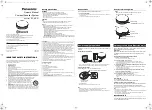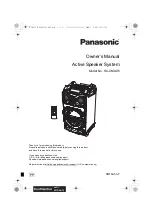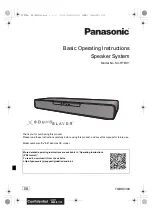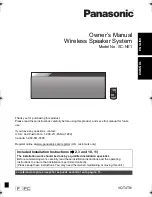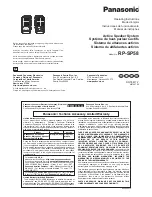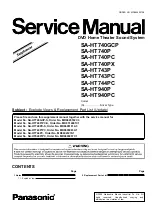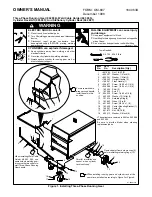
Section 5 – Data Field Descriptions
5-5
FIELD
TITLE and DATA ENTRIES
EXPLANATION
*43
Dial Tone Detection
0
= disable
1
= enable
If enabled, the system waits for true dial tone. If no dial tone is detected,
control dials at end of pause programmed in field *42.
If disabled, the system pauses for seconds entered in field *42, then dials.
NOTE:
Disabling may be necessary in high-noise environment telco networks
where noise can be confused with dial tone, resulting in premature dialing.
*44
Ring Detection Count
Enter
00
to disable ring detection.
Enter
01-14
for ring counts of 1-14.
Enter
15
to select Answering Machine Defeat
Mode
Only applicable if using a 4286 VIP Module and/or if station-initiated
downloading will be used.
NOTES:
Do not enter 00 if a 4286 is installed.
In the Answering Machine Mode, the caller should let the phone ring once,
then hang up, and call again within 30 seconds. The system, upon hearing
one ring followed by nothing, does not answer the first call, but readies itself to
pick up on the first ring of the next incoming call that is received within 30
seconds (i.e., the downloader calling again).
Must be
00
for UL installations.
*45
Primary Format
0
=Low Speed;
1
=Contact ID;
2
=ADEMCO
High Speed;
3
=ADEMCO Express
Enter the reporting format for the primary telephone number.
*46
Low Speed Format (Primary)
0
= ADEMCO Low Speed
1
= Sescoa/Radionics
Enter the low speed format for the primary telephone number.
*47
Secondary Format
0
=Low Speed;
1
=Contact ID;
2
=ADEMCO
High Speed;
3
=ADEMCO Express
Enter the reporting format for the secondary telephone number.
*48
Low Speed Format (Secondary)
0
= ADEMCO Low Speed
1
= Sescoa/Radionics
Enter the low speed format for the secondary telephone number.
*49
Checksum Verification
Enter 2 digits, one for the primary and one
for the secondary.
0
= disable
1
= enable
If enabled, the system for either or both primary/secondary formats sends a
verification digit to validate the message at the receiver without having to send
two message rounds. Selection is valid for 3+1, 4+1, and 4+2 reports.
*50
Sescoa/Radionics Select
0
= Radionics
1
= Sescoa
Radionics selection uses hexadecimal 0-9, B-F reporting.
Sescoa selection uses only numeric reporting (0-9).
NOTE:
The selection applies to both primary and secondary phone numbers.
*51
Dual Reporting
0
= disable
1
= enable
If enabled, all reports are to be sent to both primary and secondary phone
numbers.
NOTE:
If used with Split Reporting option 1 (1*34), alarms go to both primary
and secondary numbers, while all other reports go to secondary only. If used
with Split Reporting option 2, alarms go to both lines, open/close and test
messages go to secondary only, while all other reports go to primary.
*52
Standard/Expanded Reporting
Primary
0
= disable
1
= enable
This field has six entries as follows: Alarm, Restore, Bypass, Trouble,
Open/Close, Low Battery. If enabled, expanded reports are sent to the
primary phone number if low speed format is selected in field *45.
NOTE:
Expanded overrides 4+2 format.
*53
Standard/Expanded Reporting
Secondary
0
= disable
1
= enable
This field has six entries as follows: Alarm, Restore, Bypass, Trouble,
Open/Close, Low Battery. If enabled, expanded reports are sent to the
secondary phone number if low speed format is selected in field *47.
NOTE:
Expanded overrides 4+2 format.
Summary of Contents for VISTA-128BPEN
Page 2: ......
Page 10: ......
Page 58: ...Vista 128BPEN Installation and Setup Guide 3 38 ...
Page 82: ...Vista 128BPEN Installation and Setup Guide 5 14 ...
Page 102: ...Vista 128BPEN Installation and Setup Guide 8 2 ...
Page 118: ...Vista 128BPEN Installation and Setup Guide C 2 ...
Page 126: ......




































